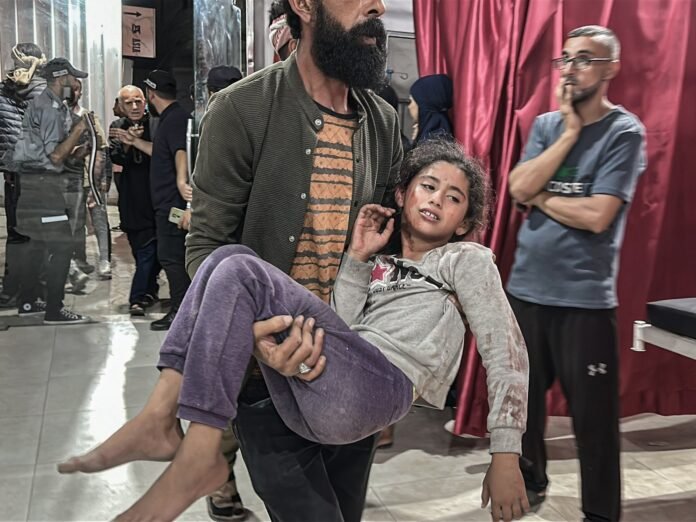Fragile ceasefire to end Israel’s two-year war on Gaza hangs by a thread, with Rafah crossing closed, aid restricted
Israel has killed nearly 100 Palestinians in Gaza and wounded 230 since the fragile truce brokered by the United States came into effect on October 10.
Over a tense period of accusation and counter-accusation, Israel’s army has shot at unarmed Palestinians and bombed Gaza on more than one occasion. The latest was on Sunday, when it claimed Hamas fighters had attacked its soldiers in the Rafah area, which Israel controls.
Israel’s war on Gaza, described by international organisations and a United Nations commission as a genocide, has killed more than 68,000 people and wounded 170,200 since October 2023. A total of 1,139 people died in Israel during the Hamas-led attacks on October 7, 2023, and nearly 200 were taken captive.
So, who broke the ceasefire? Is there still a ceasefire? Are the Palestinian people finally getting peace and aid? Here’s what we know:
The Israeli military said on Sunday that Hamas had violated the agreement and two of its fighters had killed two Israeli soldiers in Rafah.
Israel then carried out a “massive and extensive wave” of strikes across the Gaza Strip.
Hamas’s armed wing, the Qassam Brigades, said it was unaware of any clashes, pointing out that Israel controls the Rafah area and that the Brigades had no contact with any Palestinian fighters in Rafah.
This was not the only time Hamas has been accused of violating the ceasefire.
The ceasefire is a 20-point proposal unveiled by the US at the end of September and mediated with the help of Qatar, Egypt, and Turkiye.
The conditions include:
Hamas’s response accepted the condition of releasing all captives and leaving Gaza’s governance to an “independent Palestinian administration”.
As for the remaining demands on Hamas, it said they needed to be “addressed within an inclusive Palestinian national framework, of which we will be an integral part and to which we will contribute”.
Israel has violated the deal 80 times, the Government Media Office in Gaza says, killing at least 97 Palestinians.
What happened? Why did people say the ceasefire was broken?
On Friday, the Israeli military fired on a civilian vehicle, killing 11 members of the Abu Shaaban family in the Zeitoun neighbourhood.
There were seven children and three women in the car – the family was trying to reach their home.
Israel also imposed restrictions on aid, keeping the Rafah crossing closed and telling the UN on Tuesday that it would only allow 300 aid trucks – half of the number in the deal.
Hamas released all 20 living captives and, despite accusing Israel of violating the ceasefire over and over, has also recovered and returned 12 of the 28 bodies of the captives.
On Friday, Hamas reiterated that it is committed to the terms of the ceasefire deal, but that recovery was very difficult given the sheer volume of rubble Israel created with its relentless bombing.
Without new equipment and external assistance, Hamas noted, the effort would be slow and could not be guaranteed.
Hamas’s efforts at retrieving captives’ bodies come as Gaza’s civil defence said more than 10,000 slain Palestinians remain trapped under debris and rubble across the enclave.
Not really.
Entire neighbourhoods have disappeared under Israeli bombs, making it almost impossible for people who lived there to figure out where their houses were.
In addition, the “invisible yellow line” beyond which Palestinians run the risk of being shot and killed is striking fear in many, especially people who don’t know if their home is on the Israeli or Palestinian side of the yellow line.
A rough map shows that the yellow line leaves about 58 percent of Gaza under Israeli control.
Food and resources also remain fatally scarce in the besieged enclave as Israel continues to block humanitarian aid.
The Israeli government did not pledge to fully pull its forces out of Gaza, saying it may keep a buffer zone until there is no “resurgent terror threat” – a loophole experts told media gives it a margin to remain indefinitely.

